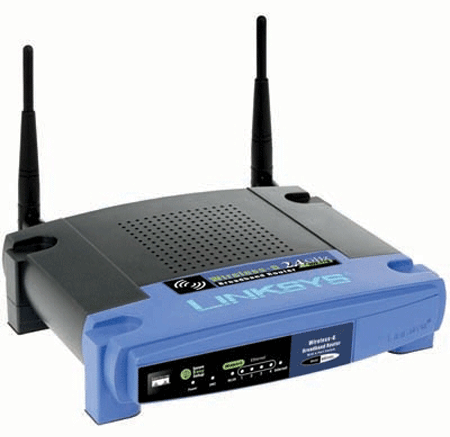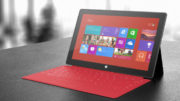OK, fess up. You probably don’t have the latest wireless networking gear. Or, I should say, you might have some current stuff but you probably aren’t current with all of it. Even if you have a relatively modern mesh networking set up, it’s probably hooked up to the router you got for free from the cable company. How worried should you be?
First, a look at the current landscape
It seems like it’s getting harder and harder to remember where we are in the evolution of Wi-Fi. In the beginning, there were two competing standards, 802.11a and 802.11b. But that was 20 years ago. The first router you probably used most likely supported 802.11g, which is still actually fast enough for most things you’re going to do. But all of those standards are considered insecure and obsolete. So yes, if you still try to mooch your Wi-Fi from Panera Bread, you should probably not do that.
After 802.11g came Wi-Fi 4, which was originally known as 802.11n. It’s still faster than anything most humans need, despite coming out an astounding 15 years ago. Following that was Wi-Fi 5 (802.11ac) in 2014, Wi-Fi 6 in 2019, Wi-Fi 6e in 2020, and routers that support Wi-Fi 7 are expected to roll out in earnest this year.
It’s been a predictable pattern. Router manufacturers say that the latest hardware will give you insane speeds. Even 10-year-old Wi-Fi 5 is supposed to give you 7 gigabits per second. Seriously. And then, in the real world speeds are much lower. So they come up with the next standard, which they promise has even higher speeds. And it’s still not really that great in the real world. And over, and over.
Why does Wi-Fi disappoint?
There are two reasons, and they’re not changing anytime soon. The first is that these insane maximum speeds are generally in very controlled environments with no walls and no electrical interference. The other is that Wi-Fi may give you speeds over 1 gigabit per second, but the average person out there doesn’t have a real internet speed anywhere near that. Today’s service providers often promise speeds of 100-500Mbps, but servers themselves struggle to send you more than about 75Mbps in most cases. So your Wi-Fi may be capable of massive speeds but it’s connecting to servers that aren’t.
But let’s talk security
Generally speaking, as long as you are using a router from the last decade or so, you have about the same level of security. The speed of the router doesn’t really dictate the security level. What does is the level of password protection.
Early versions of the Wi-Fi Protected Access protocol were strong enough for the early days of the internet, but they’re considered easily hackable now. Today’s version of the WPA protocol, WPA3, isn’t hackproof by a long stretch. But it does have enough encryption in it that it would take way too long to hack it with conventional means. If your current internet hardware doesn’t support WPA3, you should definitely upgrade, and now.
You should also choose a Wi-Fi password that’s long and hard to crack. We all know this, and we all still choose our dog’s name as our Wi-Fi passwords because it’s too much of a pain in the neck to choose something secure. You know you do it. (For the record, I do not have a dog.) Still, you’re totally to blame if your Wi-Fi gets hacked because it’s your apartment number followed by the year you were born.
I generally recommend that you choose a passphrase rather than a password. A passphrase contains regular words and spaces. The longer and more random it is, the harder it is going to be to crack. I tell people, choose the words of your favorite song but transpose two of the words. For example, a password like mary had a lamb little is generally as secure as any random combination of letters and numbers. It’s a lot easier to remember, though.
The firewall in your router and computer is a joke
That’s right I said it. Unless you’re running enterprise-level security at home, your router’s firewall and your computer’s built-in security protections won’t save you. The good news is that the combination of these things will probably stop most casual hack attempts. But if a hacker gets your Wi-Fi password, they’re into your network and those firewalls aren’t going to stop them. That’s why good password habits are incredibly important.
What can you do?
The first thing I tell people to remember is that they’re probably not the target of a massive hack attempt and they probably won’t be, ever. That doesn’t meant to let your guard down. It just means that using a fairly modern router, anything that supports WPA3, is going to be enough to stop most routine hacks. It’s even better if your password-protect your important documents. It only takes a computer about 4 hours to hack a Microsoft Word file but that’s better than no hours. What’s even better would be storing your really important stuff on a flash drive or external drive that isn’t even connected to your network.
Turning your devices off when you’re not using them helps, too. Yes, it takes them a little longer to get going but most devices can’t be hacked if they’re not on. You should check any PCs to make sure “Wake on LAN” is disabled, so that they can’t be turned on remotely. Once you do that, you computers can’t be hacked unless someone literally comes in and steals it. And realistically, if that happens you’ll have other issues to consider.
The most important thing you can do…
…is to make sure you’re as current as you can be with security updates on all your devices. Once you’ve done that, take a few minutes to shop the great selection at Solid Signal. We have industrial-strength network devices as well as tens of thousands of other parts you won’t find anywhere else. If you want a custom quote to really harden your home or business, we can help with that too! We offer products from Cradlepoint, Ubiquiti, and other enterprise-level vendors that can give you the government-level security you crave. Call us at 888-233-7563 during East Coast business hours and we’ll tell you all about it. If it’s after hours, fill out the form below and we’ll get back to you, usually within one business day.





